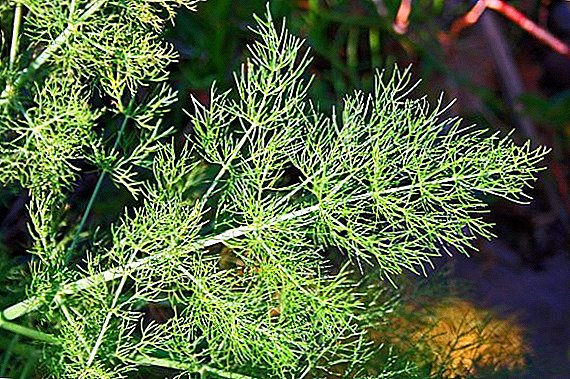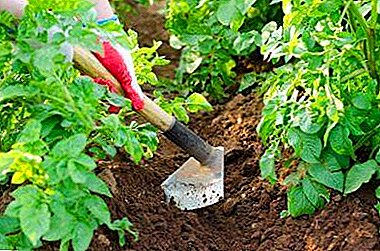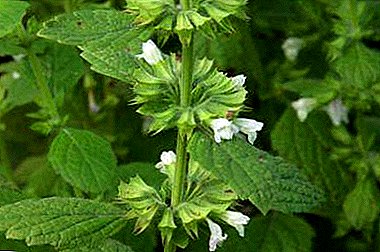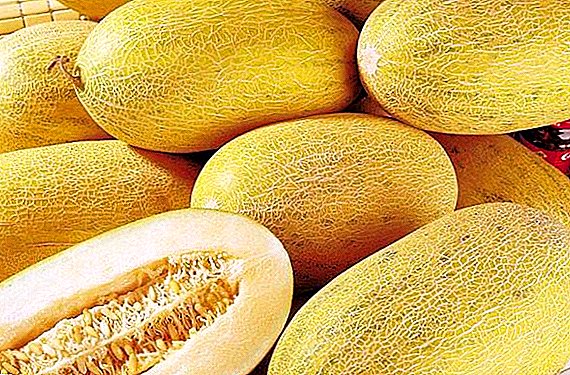 For most people, late summer is associated with melon. With its bright presence, it helps to dilute the already tired summer diet and make it more enjoyable and useful. Despite the large number of all sorts of varieties of the product, the most popular is the torpedo melon. In this article you will find out the answers to the following questions: how to grow melon from seeds where melon grows, as well as a lot of interesting facts about this wonderful culture.
For most people, late summer is associated with melon. With its bright presence, it helps to dilute the already tired summer diet and make it more enjoyable and useful. Despite the large number of all sorts of varieties of the product, the most popular is the torpedo melon. In this article you will find out the answers to the following questions: how to grow melon from seeds where melon grows, as well as a lot of interesting facts about this wonderful culture.
Variety description
Due to its external similarity with a self-propelled underwater mine, this melon variety was called the Torpedo. In addition to the elongated shape, the vegetable has a very dense crust, which makes it possible for it to carry over long transports without any difficulties. Also, the crust has a yellow color and a pattern in the form of a fine mesh. As for the internal characteristics, the melon pulp is endowed with a special taste, texture and aroma, as a result of which it simply melts in the mouth.
Did you know? Since the melon is a representative of the pumpkin family, it is customary to refer to the category of vegetables.Central Asia is considered the birthplace of culture, but this does not make it impossible to grow the fruit in other localities. The fact is that the region is characterized by high temperatures. For this reason, the product grows in the shortest time with the maximum range of taste.
The average cultivation period, for example, in Uzbekistan is 60-70 days, that is, melons on the shelves can be seen in mid-August. In this case, the weight of the fetus can reach 15 kg. 
Growth Conditions
In order for fetal growth to be as productive as possible and without complications, it is necessary to adhere to all the conditions necessary for this.
Temperature and humidity
Since melon is a heat-loving culture, when choosing a place to plant it is necessary to avoid areas where the temperature does not exceed 15 degrees Celsius. Seeds will be able to develop normally only at a daytime temperature of 20-25 degrees and at night - not less than 15 degrees.
Important! Do not buy melons in July, and especially in June. Most likely, such specimens were grown using chemical means.Gusts of cold wind are also very undesirable.

Lighting
If you do not have the opportunity to place the fetus in the open space, you can create additional lighting, the intensity of which should be from 5,000 to 6,000 lux (lux).
Learn more about the intricacies of growing melons in the area, the benefits of melons, the rules of harvesting for the winter and how to deal with diseases and pests of melons.
Soil composition
It is necessary to approach the preparation of the soil with all the responsibility, because the more fertile it is, the better the melon. The proportions for creating good soil look like this:
- 25% peat;
- 25% sand
- 50% of humus.

Popular growing methods
The most popular are two types of growing: spreading and trellis.
In the spread
The essence of this method is as follows: the main shoot is pinched over the fourth leaf, while leaving two side shoots. Other shoots pin to the ground, thereby stimulating the development of an additional root system.
The question arises: what is the use of these actions? The fact is that thanks to this principle, the nutrients are spent not on the green mass, but on the melon itself. 
Tapestry
Growing melons "Torpedo" in this way is appropriate for the most part only in greenhouses or in case of a critical need to save space on the site.
First you need to stretch two trellis at a height of 2 m. In their quality, you can use wire or rope. Then, 4-5 days after disembarkation, shoots need to be tied up to the trellis (one escape - to the left rope, the other - to the right).
Important! At home it is best to carry out the cultivation by seedlings.This gives the lashes excellent access to lighting. After a certain period, the melon will no longer need a garter, as it can wrap itself around the ropes.

Melon sowing rules
For hundreds of years of cultivation of this culture a number of certain rules have been developed, which certainly need to be followed, counting on a good harvest.
Seed preparation and selection
When selecting seeds, be guided by the following criteria:
- The size. Always choose larger seeds. As practice shows, such seeds are better.
- Purpose You need to focus on the seeds intended for planting in your climate zone.
- Fitness. When purchasing seeds, you should know everything about the type of your soil. The success of the further development of the fetus depends on it.
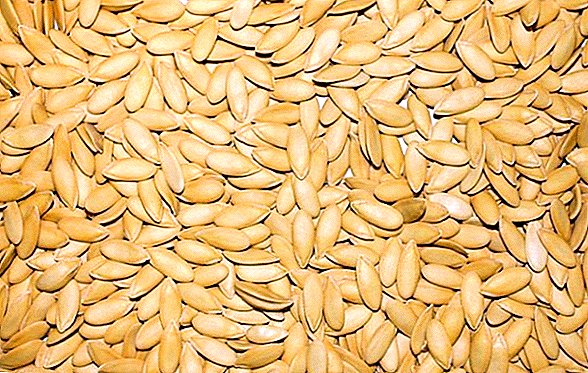 It is worth mentioning one popular method for identifying empty seeds. If you put all the seeds in the water for a day, some of them will come up. It is from these seeds that one must get rid of, since they are empty.
It is worth mentioning one popular method for identifying empty seeds. If you put all the seeds in the water for a day, some of them will come up. It is from these seeds that one must get rid of, since they are empty.Sowing scheme
Sowing is recommended in the period from late April to mid-July. In the case of too early or too late sowing, there is a risk of catching frosts and losing crops.
The process of growing melon seedlings begins with the acquisition of peat pots with a diameter of up to 10 centimeters. This is followed by filling the pots with earth. And finally, the main stage - sowing seeds. At 1 pot enough to throw 2-3 seed to a depth of about 1.5 cm.
Warming up the seeds will help you get a bigger crop. Leaving them at 60 degrees for 4 hours will increase your yield by 25%.  Experienced gardeners sow seeds in pots 35 days before they move seedlings to open ground. Such a warning allows the plant to prepare itself to the maximum for drastic changes in the situation.
Experienced gardeners sow seeds in pots 35 days before they move seedlings to open ground. Such a warning allows the plant to prepare itself to the maximum for drastic changes in the situation.
Planting seedlings in open ground
In order not to damage the roots of the plant, it is necessary to water the pot with seedlings and only then remove it. After extraction, you need to put the bush in the hole to a depth of 4-6 cm with an interval of 80-90 cm between each well.
Important! You should not grow representatives of the pumpkin family, including melons, in the same place for several years. At best, this will lead to a decrease in the amount of the crop, and at worst - to its absolute death.The distance between the rows should be about 1-1.5 m. The bush should be located in the hole in such a way that the root collar is at ground level.
 The hole itself should be filled with a mixture of organic matter (compost or humus) and warm water. Done! It remains only to save the seedlings for the first 2-3 days from direct sunlight.
The hole itself should be filled with a mixture of organic matter (compost or humus) and warm water. Done! It remains only to save the seedlings for the first 2-3 days from direct sunlight.How to care for a plant?
Despite the resistance of the melon to many adversities, there are certain subtleties in the care, the neglect of which can lead to disastrous consequences for the plant.
You will also be interested to get acquainted with such representatives of melons as zucchini, pepino, squash, pumpkin, watermelon, cucumbers.
Watering
Watering a melon is recommended only when the soil is dry, but always with warm water, with a temperature of 20 to 25 degrees Celsius. During the ripening period of the vegetable, the best solution would be to reduce watering to a minimum, or even stop it.
This approach will help the plant to accumulate the maximum amount of sugars, while an excess of moisture leads to their excess. 
Top dressing
Often the plant is fed 2-3 times, depending on when the leaves are closed. We will understand all three feedings alternately:
- The first time the melon is fed two weeks after disembarkation. As a means for fertilizing use ammonium nitrate. 20 g of this preparation is diluted with a bucket of water. The resulting mixture is distributed to 2 liters per bush.
- Repeat the process during the budding phase.
- The last feeding is carried out 3 weeks after the previous one, during the growth of the ovaries. At this time, use a solution of phosphorus-potassium fat, 50 and 20 g per bucket of warm water.

Pinching and removing the ovaries
Proper growth restriction is one of the main guarantees of a successful harvest. Pinching is carried out on the main lash and side, but not all completely: you need to leave about 2-3 shoots. It is also necessary to pinch the top of each of the lashes.
When the melon reaches 5-6 cm in diameter, it means that it is already time to remove the excess ovaries. On 1 bush will be enough to leave about 3-6 of the most developed fruits.
Use pieces of slate or roofing felt as a litter: it will save your plant from rotting. 
Harvesting
The following indicators will help you determine the level of ripeness of melons:
- the fruit is easily separated from the lash;
- pronounced skin color;
- small cracks on the entire surface of the vegetable;
- rings around the stem;
- peculiar smell.
Did you know? 25% of the world's consumed melons come from China. This country produces 8 million tons of melons annually.Do not forget to turn the melon from time to time. Thus, it will turn out evenly ripe from all directions. You can simply buy a melon and not spend a lot of time and energy on its own cultivation, but by doing it yourself, you are guaranteed to get a reliable, fresh and inexpensive product.


